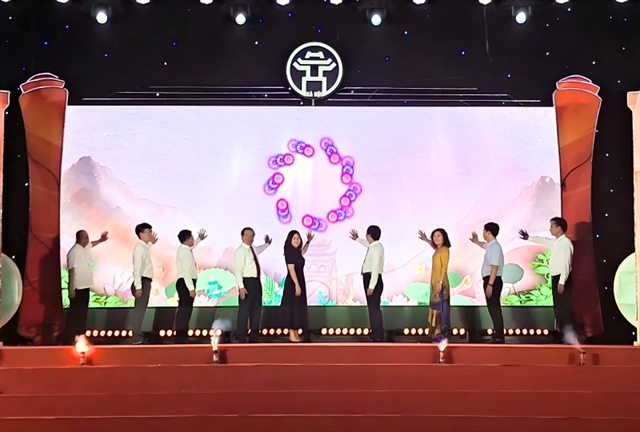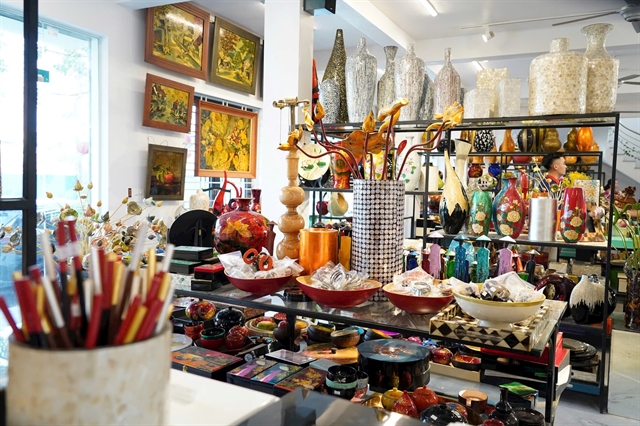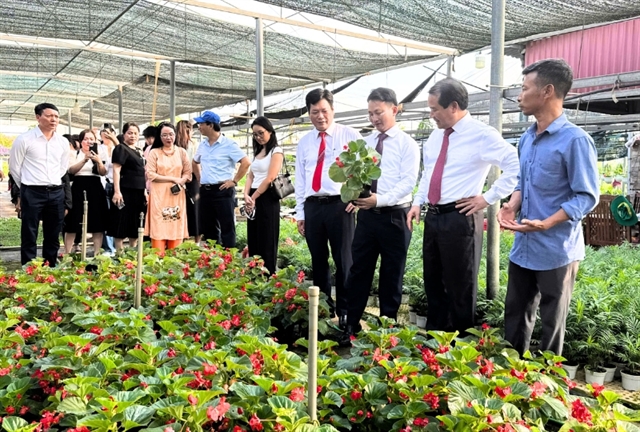Weather:
- Ha Noi 24oC
- Da Nang 25oC
- Ho Chi Minh 30oC

HÀ NỘI — Hà Nội has launched three new products to realise its tourism potential and attract more visitors to the land of rich culture and history.
The city's Department of Tourism and six communal People's Committees of Phúc Thọ, Đại Thanh, Ngọc Hồi, Hồng Vân, Chuyên Mỹ and Ô Diên held a launching ceremony on October 18.
This is one of the key activities under Hà Nội’s Investment, Trade, and Tourism Promotion Programme 2025, contributing to the implementation of Government Resolution No. 82/NQ-CP dated May 18, 2023, on effective and sustainable tourism development.
The event reaffirms the city’s role as the nation’s leading cultural and tourism hub - where heritage, craft villages and creativity converge - connecting communities, businesses and visitors in a space rich in cultural identity.
According to the organising committee, the theme Convergence of Quintessence, demonstrates the spirit of inheriting and spreading the cultural, historical and traditional values of Hà Nội: taking culture as the foundation, people as the centre and connection, creativity and experience as the driving force for sustainable development.
Deputy Director of the department Trần Trung Hiếu said the launching ceremony aimed to promote Hà Nội’s new tourism products, created through a collaboration between the government, businesses and the community.
He added that the event contributes to fostering innovation, diversification and enhancement of tourism product quality, in line with the city’s orientation toward green and smart tourism development.
Cultural tourism products, craft village tourism, agricultural and rural tourism received strong support and initially formed a unique value chain, that helped widely spread the fame of the capital's 'Safe - Friendly - Quality - Attractive' tourism.
“This initiative harmoniously blends the depth of heritage with modern experiences -- a distinctive direction that Hà Nội is pioneering to make tourism a true spearhead of economic growth, contributing to the development of a creative, sustainable, and unique capital,” said Hiếu.
The first product is Con Đường Di sản Nam Thăng Long, Hà Nội - Tinh Hoa Làng Nghề Việt (The Heritage Road in South Thăng Long, Hà Nội - The Quintessence of Vietnamese Craft Villages).
It is a journey connects four communes, Đại Thanh - Hồng Vân - Ngọc Hồi - Chuyên Mỹ, taking visitors to explore the century-old craft villages, folk art and craft works which have been preserved through many generations.
Hạ Thái Village is famous for its ingenious lacquerware; Cựu Village is charming with its Asian-European architecture and tailoring; Ngâu Village is well known for its daisy wine that used to server the kings; and Phúc Am Village is associated with folk beliefs and traditional votive paper crafts.

The second product is The Path of Learning in Ô Dien Commune.
In the ancient land of Ô Diên stands the Văn Hiến Temple, where local residents worship Tô Hiến Thành, an eminent official who served under the sixth and seventh emperors of the Lý dynasty, along with many other talented figures.
The temple is a sacred space dedicated to learning and the reverence of knowledge and virtue. Visitors are guided on a journey to explore Hà Nội’s thousand-year tradition of scholarship and to uncover the educational, moral, and humanistic values that form the foundation of the elegant, intelligent and kind-hearted character of Hanoians.
The third is the rural area tour entitled Sắc hoa Tường Phiêu (Colour of Tường Phiêu Flowers) in Phúc Thọ Commune.
Tích Giang flower and ornamental plant village lies gently along beautiful and Tích River. On an area of over 100ha, fields of ancient daisies and roses and hundreds of flowers and ornamental plants are blooming, creating a brilliant scene, reflecting the skillful hands and industrious spirit of the local people.
Standing out in that space is Tường Phiêu Communal House, a special national relic, that bears the architectural imprint of the Lê Dynasty and maintains the historical and cultural values of the ancient land.
The harmony between nature, heritage and people has formed the tourism product in a rural destination rich in identity, where visitors can feel the simple, pure and sustainable beauty of a contemporary Hà Nội, still filled with the soul of the old countryside, according to organisers.
Phúc Thọ Commune People's Commitee Chairman Kiều Trọng Sỹ, said: "Three products - three journeys with the same spirit: preserving and promoting traditional values, inspiring creativity, connecting heritage and craft villages with contemporary life. Along with that, this is an important mark, affirming the capital Hà Nội as a leading tourist centre.

"In Phúc Thọ, the movement of growing flowers and ornamental plants has been inherited from the tradition of diligence, labour and creativity of many generations.
"Each work is the result of diligence and creativity of talented artisans who have shaped and made them more vivid and soulful.
"In the near future, Tích Giang will become a commercial centre for flowers, ornamental plants, seedlings, fruit trees and a destination for visitors to visit and research."
Deputy Director Hiếu said Hà Nội Tourism identified five key orientations in the upcoming period.
The city will develop unique tourism products with cultural identity, focusing on cultural - heritage - festival tourism, culinary tourism, craft village tourism, agricultural and rural tourism.
In addition, the tourism industry will accelerate digital transformation and the development of smart tourism, building a comprehensive digital tourism ecosystem.
It will also focus on cultivating high-quality human resources by enhancing creative capacity, communication, interpretation and management skills for local communities.
At the same time, efforts will be made to strengthen regional and international linkages, expand cooperation within the UNESCO Creative Cities Network, and move toward deeper and more sustainable global integration. VNS
